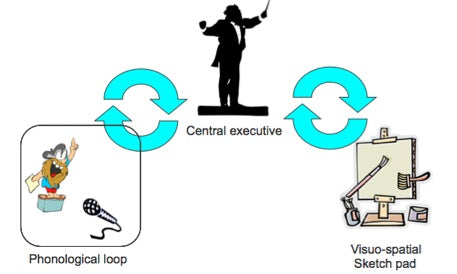Paper 1 -June 2022 -Psychology AQA A-Level -MODEL ANSWERS
SOCIAL INFLUENCE
1.) Which factors affecting minority influence are illustrated by the following examples?
For each example, write the correct factor in the space provided. ( 3 marks)
Members of a religious group give up their Saturday mornings to distribute leaflets about the importance of worship.
Model Answer
Commitment
An environmental group acknowledges that recycling can be time-consuming while emphasising its importance for the future of the planet.
Model Answer
Flexibility
All of the members of the ‘Flat Earth Society’ agree that the Earth is flat and not round.
Model Answer
Consistency
2.) Name one explanation of resistance to social influence.( 1 mark)
Model Answer
Locus of control or Social support
3.) A teacher was absent and left work for students to complete during the lesson. Some students in the class did not do the work their teacher had left for them.
Use one possible explanation of resistance to social influence to explain why this happened. ( 4 marks)
Model Answer
The absence of the teacher and the subsequent non-completion of assigned work by some students during the lesson can be explained through the concept of social support. The presence of disobedient role models among the students, as indicated by the phrase 'some students,' likely contributed to an environment where defiance was more acceptable. This presence of like-minded peers could have bolstered the confidence of other students, making them more inclined to ignore the teacher's instructions. Moreover, the idea of diffusion of responsibility within a group may have played a role, as students might have believed that the more individuals who disobeyed, the lower the likelihood of severe consequences for each individual, fostering a collective disregard for the assigned task.
4.) Describe how situational variables have been found to affect obedience. Discuss what these situational variables tell us about why we obey.( 16 marks)
Model Answer
Situational variables have been identified as significant determinants of obedience, influencing individuals' responses to authority figures and commands. Proximity, as demonstrated in Milgram's experiments, plays a crucial role in obedience. When the teacher and learner were in the same room, obedience decreased, highlighting the impact of physical closeness on one's willingness to comply.
This effect was further underscored in the touch proximity condition, where the experimenter issued orders over the phone after leaving the room, resulting in a decrease in obedience. Additionally, location has been shown to be a situational variable affecting obedience, as evidenced by Milgram's comparison of obedience rates in a run-down office block versus Yale, and Hofling's study in a hospital setting.
One main issue with looking at obedience based on situational factors is that this idea has limited explanatory power. Limited explanatory power refers to the restricted ability of a theory or model to comprehensively and effectively explain a wide range of phenomena or observations within a given context.
For example, Adorno's authoritarian personality hypothesis states that dispositional factors may be more influential than situational variables. Adorno's authoritarian personality hypothesis suggests that individuals with a predisposition to authoritarianism are more likely to submit to and obey authority figures, exhibiting a rigid and hierarchical mindset. While situational factors undoubtedly play a role, individuals with a predisposition towards authoritarianism may exhibit a more ingrained tendency to obey authority figures. This challenges the sole reliance on situational variables as explanatory factors for obedience decreasing our understanding in this area.
Moreover, a strength of studies looking at specifically situational variables have high levels of ecological validity. Ecological validity refers to the extent to which a study or experiment accurately represents real-world conditions, allowing for meaningful generalizations to everyday situations.
For example, Bickman's field study, showed increased obedience to a man dressed as a guard, rather than a man dressed in ordinary clothes provides a real-world context that may have more relevance than controlled laboratory experiments. This underscores the importance of considering the ecological validity of studies when drawing conclusions about why individuals obey authority figures. By incorporating such methodological considerations, we gain a more nuanced understanding of the interplay between situational variables and individual behaviour, shedding light on the complex dynamics that drive obedience in diverse contexts.
MEMORY
1.) Briefly outline one way in which researchers have investigated the capacity of short-term memory. ( 2 marks)
Model Answer
Researchers have investigated the capacity of short-term memory using the digit span technique, where participants are read a sequence of letters or numbers and asked to repeat the same sequence back immediately, with an additional digit added on each subsequent trial to measure the limits of short-term memory capacity.
2.) Briefly outline one way in which researchers have investigated the duration of short-term memory. ( 2 marks)
Model Answer
Researchers have investigated the duration of short-term memory by employing the trigram technique, where participants are given a three-letter nonsense syllable and instructed to count backward from a specific number for a specified time before being asked to recall the original trigram, providing insights into the temporal aspects of short-term memory retention.
3.) A student showed participants a film of a car accident. After watching the film, each participant was asked to write down what they had seen. The student was surprised to see that the descriptions of the accident were quite different.
The student’s psychology teacher suggested that the participants’ recall might be improved by using cognitive interview techniques.
Suggest two cognitive interview techniques that could be used to improve participants’ recall of the film. ( 4 marks)
Model Answer
First, participants could be asked to report every detail of the car accident, utilizing the technique of thorough reporting to ensure a comprehensive retrieval of information. Additionally, the cognitive interview could involve the technique of recalling events in a different order, prompting participants to start, for example, from the point of impact to the beginning of the film, thereby disrupting the influence of schema and expectations and encouraging a more accurate and detailed recollection of the events.
4.) Rory is talking with his grandparent and playing a game on his phone at the same time. The game involves matching blocks of the same colour to complete vertical and horizontal lines. It is only when his grandparent asks him to describe his route to school that Rory puts down his game so he can concentrate fully on his answer.
Discuss the working memory model. Refer to Rory’s behaviour in your answer. (16 marks)
Model Answer
The working memory model offers a dynamic perspective on short-term memory, conceptualising it as an active processor with multiple sub-systems, including the central executive, visuo-spatial sketch pad (VSSP), phonological store or loop, articulatory loop or control process, and the episodic buffer.
The purpose of the central executive in the working memory model is to oversee and coordinate cognitive processes, allocating attention and resources among its sub-systems, which include the visuo-spatial sketch pad (VSSP) for visual information, the phonological store or loop for auditory information, the articulatory loop or control process for speech-related processes, and the episodic buffer for integrating information from various sources into a coherent whole
Rory's behavior during his conversation with his grandparent provides a practical illustration of this model. In the initial phase, Rory divides attention between the conversation and the phone game, leveraging different sub-systems. However, when confronted with a visuo-spatial task—describing his route to school—the demands on the VSSP become overwhelming, compelling Rory to prioritise and relinquish his game to optimise attentional resources.
One key strength with this model of memory is that there is supporting research. Supporting research in psychology is essential as it advances our understanding of human behavior and mental processes, informs evidence-based practices, and contributes to the development of interventions that enhance individual and societal well-being.
For example, the case study of KF. KF struggled to process verbal information but his visual memory was unaffected. This shows that visual information (VSSP) is processed separately from verbal information. This evidence strengthens the model by illustrating how impairment in one sub-system can impact specific cognitive functions while leaving others intact. The KF case study offers valuable insights into the working memory model's validity and helps substantiate its claims regarding the modular nature of the sub-systems enhancing our understanding in this area.
Despite the strengths associated with supporting research in psychology, a notable methodological weakness arises from the reliance on case studies, as exemplified by the case study of KF in the study of memory.
Case studies involve an in-depth examination of a single individual or a small group, such as KF, who struggled with verbal processing while his visual memory remained unaffected. While this provides valuable insights into specific cognitive functions, the reliance on individual cases poses challenges in generalising findings to broader populations.
Memory, being a complex and multifaceted phenomenon, can exhibit considerable variability across individuals, making it problematic to establish comprehensive and widely applicable principles solely based on isolated case studies. Therefore, the methodological limitation of relying on case studies may hinder the development of a more universally applicable understanding of memory processes.
ATTACHMENT
1.) Which two of the following attachment concepts were not introduced by Bowlby?
Shade two boxes only. ( 2 Marks)

Model Answer
C Interactional synchrony
and
E Multiple attachment stage
2.) Outline one example of cultural variation in attachment. ( 2 Marks)
Model Answer
Cultural variation in attachment is evident in higher rates of anxious/insecure-avoidant attachments among German infants, reflecting cultural practices that encourage independence in parenting approaches. This contrasts with attachment patterns observed in cultures with different caregiving norms, highlighting the influence of cultural context on attachment styles.
3.) Lenny is being interviewed for a TV dating show. He describes his approach to relationships:
“My friends would say I’m scared of commitment and need to settle down. I suppose they’re right, I’m in my late thirties now. I fall in love constantly but my relationships never last more than a few weeks. My mum left when I was very young, I don’t know if that has something to do with it…”
Explain how, according to attachment research, Lenny’s early experience might have influenced his later relationships. ( 4 marks)
Model Answer
According to attachment research, Lenny's early experience, specifically his mother leaving when he was very young, may have influenced his later relationships through Bowlby's concept of an internal working model. Lenny's acknowledgment of constantly falling in love but struggling with commitment and enduring short-lived relationships suggests that his early attachment experiences might not have provided a secure template or blueprint for forming lasting connections. Bowlby proposed that early attachments serve as a foundation for understanding and navigating future relationships, and Lenny's mention of his mother's departure implies a potential lack of a secure attachment, leading to difficulties in forming enduring and committed relationships in his adult life.
4.) Outline Lorenz’s and Harlow’s animal studies of attachment. Discuss what these studies might tell us about human attachment. ( 16 marks)
Model Answer
Lorenz conducted a study on attachment in geese, randomly dividing goose eggs into two groups. Half hatched with the mother present in their natural environment, while the other half hatched in an incubator with Lorenz present. The incubator group imprinted on Lorenz and followed him, illustrating the concept of imprinting, a rapid and irreversible attachment formation during a critical period.
Harlow, in a controlled environment, studied attachment in infant monkeys reared with two mother surrogates – one plain wire mother dispensing food, the other a cloth-covered mother with no food. The study recorded time spent with each mother, fear conditions, and observed long-term effects on sociability and relationship patterns.
One issue however with both studies is the issue of extrapolation. Extrapolation is when we generalise the findings from humans to animals.
However, generalising findings from animal studies to humans pose challenges. These challenges involve the complex differences in behaviour, physiology, and cognitive processes between animals and humans. These variations make it challenging to directly apply findings from animal studies to human contexts, highlighting the need for cautious interpretation and recognising the unique complexities inherent in each species. This then limits are understanding in this area.
While extrapolation poses a limitation in both studies, a key methodological strength lies in the use of animals, providing valuable insights into attachment behavior. Methodological strengths refer to the soundness and effectiveness of the research methods employed. In the context of attachment studies, utilising animals allows for controlled experiments, manipulation of variables, and ethical considerations that may be challenging in human studies. This methodological advantage, despite the challenges of extrapolation, enhances our understanding of attachment behavior by offering controlled and ethically feasible investigations, shedding light on fundamental aspects of attachment processes even in non-human species.
Although both studies offer valuable insights, Harlow's study on a mammalian species may be more relevant to human experience due to the shared characteristics of primates. The implications of Lorenz's concept of imprinting and a critical period for human attachment suggest a 'window of opportunity' in which attachments must form; otherwise, negative long-term consequences may ensue. This underscores the importance of early caregiver-infant interactions in shaping the trajectory of human attachment and potential difficulties when this critical period is disrupted.
PSYCHOPATHOLOGY
1.) Describe the statistical infrequency and failure to function adequately definitions of abnormality. ( 6 Marks)
Model Answer
The statistical infrequency definition of abnormality characterizes abnormal behavior or characteristics as rare, uncommon, or unusual, often located at the extreme ends of a normal distribution curve. This approach relies on up-to-date statistics to determine what is considered statistically infrequent, and examples of specific criteria or disorders, such as low IQ as indicative of intellectual disability disorder or the rarity of obsessive-compulsive disorder (OCD), are essential for elaborating this definition.
In contrast, the failure to function adequately definition of abnormality centres on the inability to cope with everyday living. Abnormality is determined by the individual's struggle to meet the demands of regular life. This definition encompasses various criteria, behaviors, or disorders, with creditworthy examples being those that contribute to a failure to function adequately, such as an inability to hold down a job, maintain relationships, or practice personal hygiene. Both definitions provide distinct perspectives on what constitutes abnormal behavior, one emphasizing statistical rarity and the other focusing on the individual's ability to navigate daily life.
2.) Outline one limitation of systematic desensitisation as a treatment for phobias.( 3 marks)
Model Answer
One limitation of systematic desensitisation as a treatment for phobias is its time-consuming nature, particularly when contrasted with alternatives like flooding. The process involves training individuals with phobias in relaxation techniques, and the gradual exposure required can extend over multiple sessions, potentially making it less efficient for some individuals seeking a quicker intervention. While systematic desensitization is effective, the investment of time and resources may pose challenges for individuals who prefer or require more time-efficient therapeutic approaches.
2a) A biological psychologist wanted to see if there was a positive correlation between heart rate (measured in beats per minute) and levels of a stress hormone (measured in micrograms) in people with obsessive-compulsive disorder (OCD). She wrote a directional hypothesis and collected data from 20 people with OCD.
The psychologist chose to use the Pearson’s r test to analyse the data because she was testing for a correlation.
Explain one other reason why the psychologist used a Pearson’s r test in this study. ( 2 marks)
Model Answer
The psychologist used a Pearson's r test in this study because the co-variables, heart rate, and levels of a stress hormone, provided interval data.
2b.) The calculated value of r for the Pearson’s test was +0.42.
Which one of the following scattergrams best represents a correlation coefficient of +0.42?
Shade one box only. ( 1 mark)

Model Answer
C
2c.) The researcher used the following table of critical values.
Critical values of r for Pearson’s test

(2c) Is the psychologist’s calculated value significant? With reference to the table above, explain your answer. ( 4 marks)
Model Answer
The result is considered significant at the 0.05 level, as the calculated value exceeds the critical value of 0.378 in the one-tailed test. The researcher opted for a one-tailed test because the hypothesis was directional, focusing on a specific direction of the correlation between heart rate and stress hormone levels. The degrees of freedom (df) for this test are 18, calculated as n minus 2 (20 – 2)
3.) Discuss the genetic explanation for obsessive-compulsive disorder (OCD).( 8 marks)
Model Answer
The genetic explanation for obsessive-compulsive disorder (OCD) posits that the condition is inherited, with a vulnerability or predisposition passed down across generations. Specific candidate genes, such as the (SERT) and (COMT), are often implicated in this genetic vulnerability. For instance, variations in the SERT gene are linked to alterations in serotonin levels, a neurotransmitter associated with mood regulation and anxiety, potentially contributing to the development of OCD. Similarly, the COMT gene is involved in the regulation of dopamine, another neurotransmitter implicated in OCD.
However, this genetic explanation faces limitations due to limited explanatory power. Limited explanatory power refers to the constrained ability of a theory or model to comprehensively and effectively explain a wide range of phenomena or observations within a given context.
For example, the genetic explanation cannot fully account for OCD cases in families where there is no previous history of the disorder. This suggests that while genetic factors may play a role, environmental factors and other influences may contribute to the development of OCD in individuals without a family history. The interplay between genetic and environmental factors in the etiology of OCD highlights the complexity of understanding the disorder's origins. Additionally, the genetic explanation prompts further research to elucidate the precise mechanisms through which specific genes contribute to the manifestation of OCD symptoms, allowing for a more comprehensive understanding of the disorder's genetic underpinnings.











